Face-Off: Everybody's Gone to the Rapture on PC
The Chinese Room's technological showcase gets a hardware upgrade.
A PS4 exclusive until now, Everybody's Gone to the Rapture's PC release is unusual - not least for Sony Santa Monica's hand in publishing and funding the project. However, the shift in platform means developer The Chinese Room can bolster the game's already impressive visuals with even higher-grade visual fidelity. But in pushing CryEngine 3 to greater heights on PC, is this really the best way to play the game, and what do PlayStation 4 users actually miss?
Everybody's Gone to the Rapture relies on the same physically-based lighting on PC to achieve a gorgeous, almost photorealistic take on a Shropshire-inspired village. It's among the best uses of this rendering method we've seen to date; materials for frosted glass, brickwork and woodwork across its Tudor-style pub fall eerily close to the genuine article. But to augment the experience, PC adds quality settings for textures, shadows and object detail - which go from low to very high, in some respects enhancing visual aspects over PS4.
Viewed up-close, PS4's geometry, foliage, and core texture-work are identical to PC's best. However Sony's machine falls visibly short in its use of texture filtering across roads, with signs of a trilinear approach causing a blur on the ground. PC uses a higher-grade 16x anisotropic filtering at the very high texture preset, and it's surprising to see filtering on the low preset is still ahead of PS4 in overall clarity. Viewed dead-on, assets actually show little change in switching between each setting, but the grade of filtering is certainly in flux as we move between each.
PlayStation 4 is on the back foot in this sense, though it has one peculiar advantage in another. A bizarre shortfall on PC is the apparent absence of parallax occlusion mapping (POM). On PS4, normal maps for certain floors and walls are given a subtle 3D effect, remaining flat even on PC's top setting. Even in switching to its lowest texture setting, we can't initiate the effect on PC at all in its current build. It's a neat addition to the game's presentation on console, one that adds a fuller look to some surfaces, and we hope it's brought to PC via an update.
The work The Chinese Room puts into detailing Yaughton village remains tremendous, regardless. Sony's machine cuts its own corners in certain areas too, where shadow quality is notably pared back. Here, PS4 uses a shadow setting on par with PC's high preset, and the end result is softer and less defined silhouettes in direct sunlight. Even factoring in the cloud simulation - which can muddy the waters in these comparisons, due to the way it dynamically diffuses light - there's a clear difference in quality between PS4 and PC's top setting.
The last of the three settings is the most demanding: object detail. According to the developer this is the biggest leech on PC performance, and the main cause for frame-rate drops. Even on our top-end Skylake i7 rig, paired with a GTX Titan X, we could not sustain 1080p resolution at a locked 60fps. It's advised to drop one level below very high if you want to reach the 60fps target, though the visible changes are thankfully few in practice. Essentially it broadens the draw distance on objects across the village, like ornamental details on the central pub when viewed from the game's opening vista shot.
In PS4's case we get a match for PC's low preset in object detail. As well as a reining in the game's draw distances, it has the curious side-effect of making trees appear fuller than PC's superior object detail settings. Foliage is visibly thinned out on the very high preset by comparison, and with each step down on the quality setting here, they start filling out again. We're not convinced it looks any better for it at these higher settings, though the broadened object LODs do go in PC's favour.
While settings are dropped in these spots on PS4, the end results still look terrific at its native 1080p. In terms of image quality, PC offers the same motion blur and temporal AA modes seen on the console edition, available here as toggles alongside a v-sync switch. We also have an option to cap performance at 30fps, 60fps or run unbounded - and we wish PS4 would offer something similar to the former, to mitigate its wavering 20-40fps performance levels. It's good news for PC users though, especially as it takes a powerful PC to get anywhere close to a full 60fps.

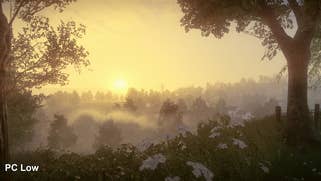

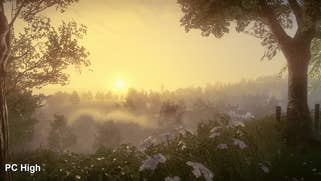




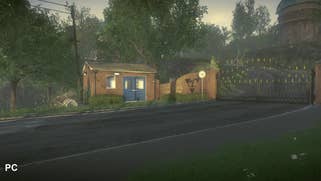
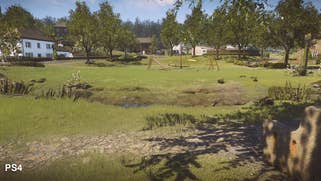
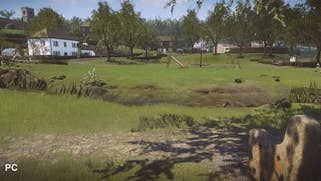

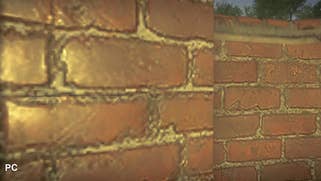

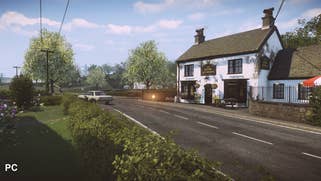


The popular Nvidia GTX 970 and AMD R9 390 are again in the limelight for our performance tests. To give each a firm workout we're running at very high settings at 1080p, and the divide in performance between each defies our expectations, where AMD has shown an advantage in CryEngine games like Ryse. On average the GTX 970 turns in 52.6fps after a stroll through the village's main streets, while the R9 390 gets us to a 47.7fps average in matching tests.
The advantage for Nvidia's card is clear, but sadly neither can nail a perfect 60fps at this top setting. Instead we're left with lurches to almost 30fps on broad overviews of the central park, which suggests some settings need pruning back. The object detail preset is a great way to start, but even on its bottom-most setting it's hard to get a perfect lock on that target performance. Even dropping all presets to low on the GTX 970 can't help the sub-60fps output of the card, when really pushed. Fortunately an uncapped frame-rate reading shows there's usually enough head-room (up to 90fps on low settings) to run the game mostly at a 60fps when capped - but it'll involve many sacrifices to get there.
There is a workaround of course. A 30fps cap lets us play entirely maxed-out on these two cards, and avoids the uneven refresh we'd get when performance is left to run the 30-60fps gamut. The one snag is that this built-in 30fps cap has frame-pacing issues; a stuttering sensation due to an incorrect ordering of frames. It's a running trend for PC games to have problems with this feature and suggests developers need access to the driver level to implement it properly. Right now, the best way to reliably enforce a smooth 30fps cap is the half-rate adaptive v-sync option in Nvidia's control panel, or else try the Nvidia Inspector tool, with a 30fps cap and triple-buffering engaged.
Everybody's Gone to the Rapture on PC - the Digital Foundry verdict
The Chinese Room again makes a case for its superb use of physically-based rendering - a mesmerising, post-apocalyptic stroll through a quaint English village that translates well to PC. Despite missing the POM technique seen on PS4's textures, the PC experience is otherwise enhanced at top settings. Texture filtering and shadow details are clearer, and on the right hardware, geometry across Yaughton also renders in at greater range. Each is a welcome embellishment, and we're getting a solid conversion on PC overall - and it's a game that already shone brightly in the visual stakes on PS4.
Given its glacial pace, it's surprising how much of a strain is put on the GPUs we tested, even bringing almighty GTX Titan X to sub-60fps dips. For Nvidia set-ups, our advice is to simply lean on the GPU-level 30fps cap to smooth out the experience, and run at the highest presets possible. It's a trade-off that makes sense in this case; a rapid 60fps response is difficult to achieve, and a low priority for such a game in the first place. We'd rather have it all on PC, but if push comes to shove, Everybody's Gone to the Rapture deserves to be seen at its peak graphics settings.
For PS4, the good news is that while the PC's benefits are clear, the core visual hook of the game is common to both platforms. Both the lighting and exceptional detail across the village are outstanding and Sony's machine produces results that still impress. One lasting bugbear with the console version is its wavering frame-rate; our original analysis shows a range between 20-40fps overall that could benefit to some extent from a 30fps cap seen on PC.
Left unlocked, it's not an ideal state of affairs for the PS4 edition. On the plus side, a boost in this game's performance on the proposed PS4K (or Neo) should be much easier to highlight without a cap, provided it's permitted to access its extra GPU resources. Obviously, it's a subject we're eager to cover, but our sub-60fps returns on GTX 970 and R9 390 puts question marks over what gains we can truly expect from this game once Sony's upgraded hardware launches.










